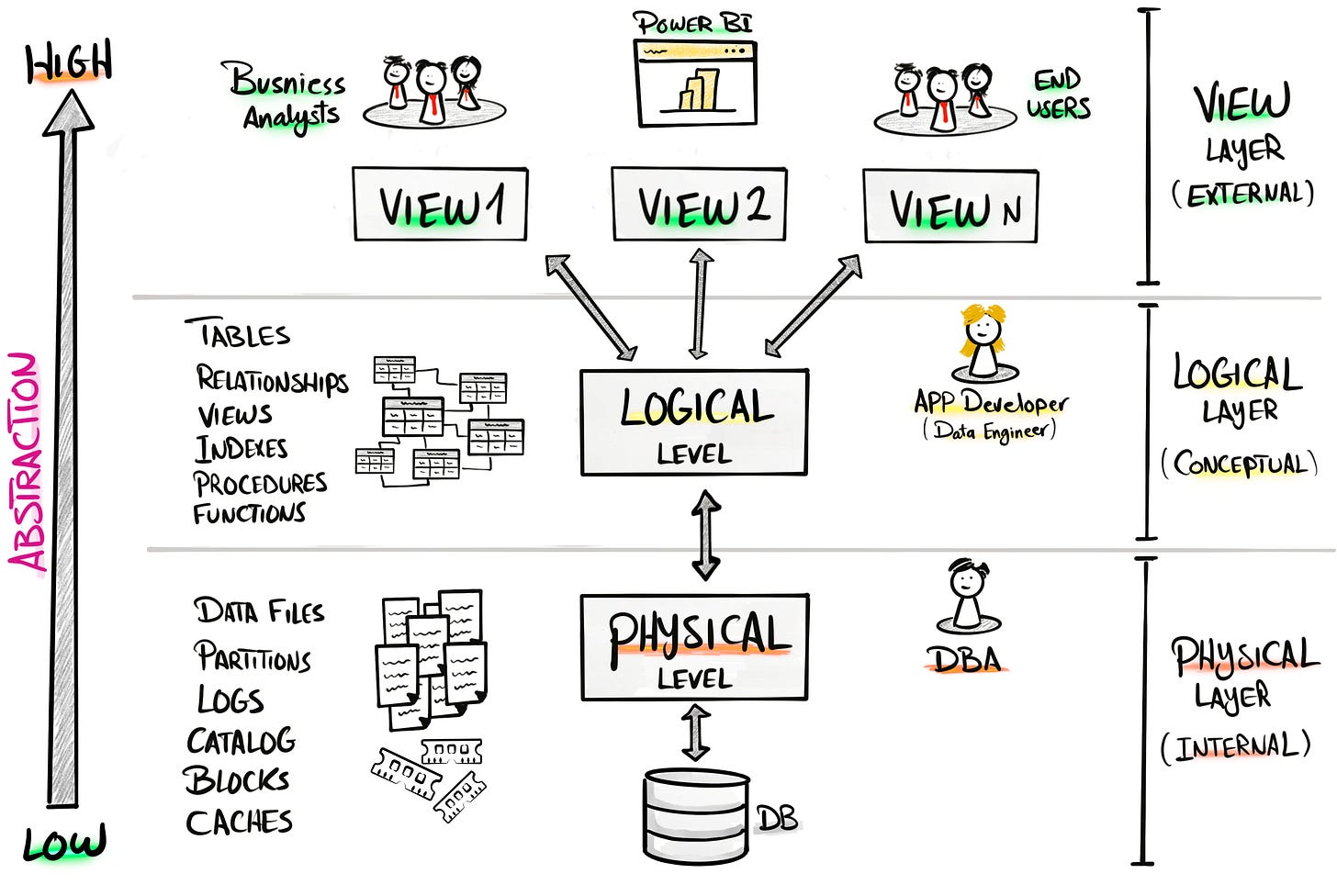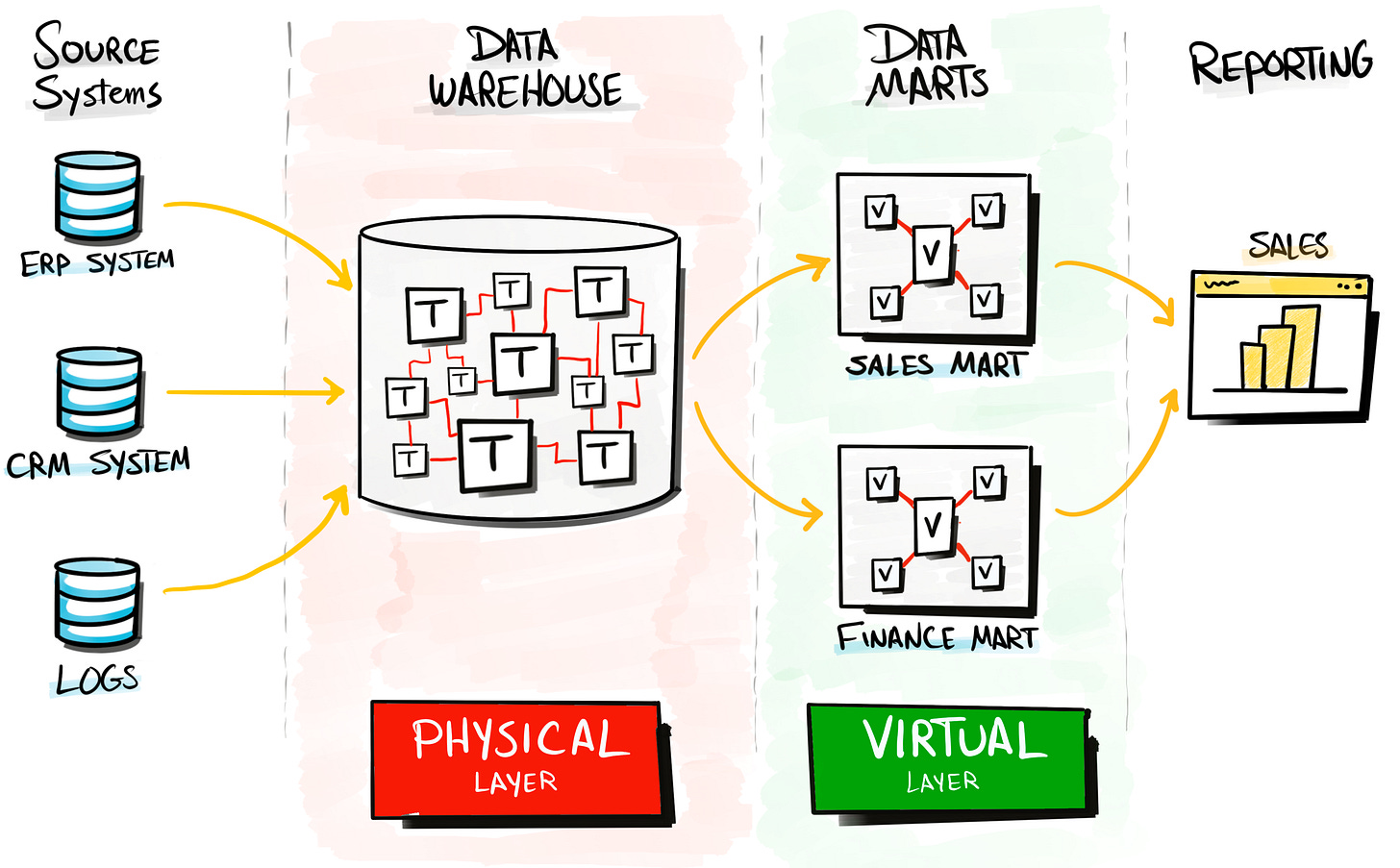If you've ever worked with databases, you've probably repeated the same SQL queries over and over. That's where SQL Views come in—they make managing queries easier and more efficient.
In this post, I'll explain what SQL Views are, why they're useful, and how they can improve the way you work with your database. No need to worry if you're new to SQL—I'll keep it simple and easy to follow.
What Is an SQL View?
In its simplest form, an SQL View is like a virtual table. It doesn’t store data itself but pulls data from one or more tables in the database and presents it as a single table. When you create a view, you’re essentially creating a saved SQL query that you can reuse whenever needed.
Views vs Tables
Views vs CTE
Three-Level Database Architecture
Understanding the three-level database architecture is important because it shows how views fit into the big picture of managing and accessing data
Databases are organized into three layers to help manage and access data efficiently. Here's a simple breakdown of each:
1. Physical Layer
This is where data is physically stored on the disk, like files or blocks. It’s the most technical layer, and only database administrators usually deal with it. They manage things like security, backups, and system performance. Regular users don’t interact with this level directly.
2. Logical Layer
At the logical level, data is structured in tables, views, and relationships. Developers and data engineers work here to define how data is organized. They focus on how data is linked and how it should be accessed, without worrying about where it’s physically stored.
3. View Layer
The view layer is what most users interact with. It’s a simplified version of the database, showing only the relevant data needed for specific tasks. For example, a business user might see a report generated from a view that hides unnecessary technical details. This layer is all about making data easy to use and access.
What are the Use Cases of Views?
SQL Views are a powerful tool, and I use them a lot in my projects to solve all kinds of tasks. Now I’ll walk you through the 6 key use cases where I rely on views the most:
#1 Use Case: Central Complex Query Business Logic
I use views to store complex queries in one place, so I don’t have to repeat the same logic over and over. Once the view is set up, you just query it like a table, and it makes your work a lot simpler.
#2 Use Case: Hide Complexity
Large databases can be overwhelming with cryptic table names and complex relationships. Views let you create user-friendly versions of your data, hiding unnecessary details and making it easier for others to access relevant information.
#3 Use Case: Data Security
With views, you can control which users see specific data by restricting access to certain rows or columns. This is great for protecting sensitive information and managing permissions across different user roles.
#4 Use Case: Flexibility & Dynamic
When you need to modify your database (like renaming tables or adding columns), views act as a layer between the users and the underlying data, preventing disruptions to their queries while giving you the flexibility to make changes.
#5 Use Case: Multiple Languages
If you work with global teams, views can help you offer the same data model in different languages. You can rename columns and tables in the view without changing the original database, making data more accessible to international users.
#6 Use Case: Virtual Data Marts in DWH
In data warehouses, views are ideal for creating virtual data marts. They allow you to organize and access specific subsets of data without physically storing it, ensuring data is always current while simplifying management.
When Should You Use SQL Views?
You should consider using views when:
You’re working with complex queries that need to be reused regularly.
You want to provide restricted access to certain data without giving full access to the underlying tables.
You need a simplified way to present data to non-technical users or external applications.
Views can be a valuable tool, especially when your database grows in complexity, or you need more control over how users interact with the data.
Final Thoughts
SQL Views are an underrated yet incredibly useful tool that can save time, reduce errors, and increase the security of your database. Whether you’re dealing with repetitive queries or trying to manage access to sensitive data, views can make your life easier while keeping your data organized.
Once you start using views, you’ll likely wonder how you ever managed without them!
I hope you found this helpful, and if you have any questions or want to share your own tips, I’m all ears! Happy querying!
Baraa
Hey friends —
I’m Baraa. I’m an IT professional and YouTuber.
My mission is to share the knowledge I’ve gained over the years and to make working with data easier, fun, and accessible to everyone through courses that are free, simple, and easy!














